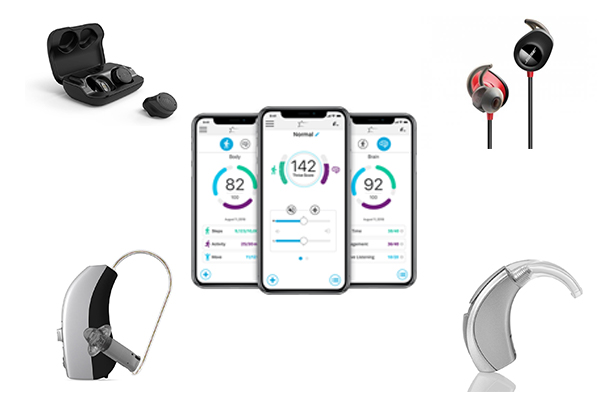The 5 Most Interesting Hearables Developments from CES 2019
At this year’s annual Consumer Electronics Show (CES), a number of interesting hearables-related developments were announced that continue to add momentum to the already hot product category. It’s great to watch these miniature ear-computers mature right before our eyes, with new features, integrations and capabilities beginning to surface that will elevate these devices to the next level. It’s not just the consumer-based hearables either that are progressing nicely, as hearing aids continue to prove they’re at the forefront of innovation with ear-worn computer technology. Here are the five hearable developments that caught my eye at this year’s show.
1. Valencell’s BiometRIC Hearing Aid
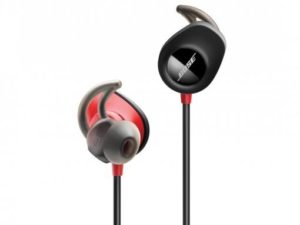
Bose SoundSport Pulse; Photo Credit: Valencell
Biometric sensors and the data that they capture represent one of the most exciting areas of development for ear-worn devices. Some of the fitness-centric hearables on the market, such as the Bose SoundSport Pulse, already have bio-sensors built in, but at this year’s CES, we’re seeing the first wave of hearing aids to feature these types of sensors.
Biometric sensor manufacturer, Valencell, demoed its BiometRIC hearing aid, which is the first receiver-in-the-canal (RIC) hearing aid with an embedded sensor. Valencell is positioning this sensor as a commercially available PPG-sensor, that any hearing aid OEM can use to integrate into their offering. This optical-based sensor is capable of capturing activity levels (step count, calorie burn), as well as heart rate, blood pressure and blood oxygenation. So, we should continue to see this trend of ear-worn devices doubling as, “biometric data collectors” as the sensor technology is now accessible through Valencell.
2. Starkey Continues to Enhance its Livio AI Offering
One of the first hearing aid OEMs to take advantage of Valencell’s PPG-sensor technology is American manufacturer, Starkey. Starkey made waves last year at its biennial summit with the introduction of its cutting-edge Livio AI hearing aid that incorporates an accelerometer and gyroscope, capable of capturing fitness data, as well as detecting falls in users. This year, Starkey improved on its Livio AI offering, by debuting a new version that includes a Valencell optical sensor to capture the user’s heart rate data.
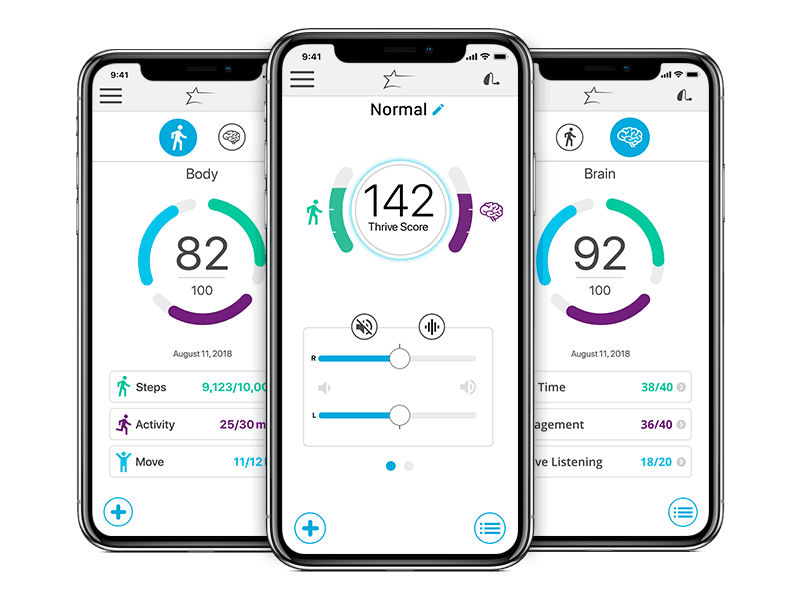
Thrive Hearing Control app by Starkey; Photo Credit: Starkey
Starkey has “gamified” the data they’re recording with Livio AI in the hearing aid’s companion app, “Thrive” by assigning a daily score to the data the hearing aid is recording. Livio AI users will be able to view their fitness scores (recorded from the embedded inertial sensors), cognitive scores (recorded from the usage of the hearing aid), alongside the new heart rate readouts. This continues to expand on the mission that Starkey’s CTO, Achin Bhowmik, has outlined as “transforming the hearing aid into a multi-function device.”
3. Smart Assistant Integration into Hearing Aids
Along with the biometric sensor announcements from Starkey, the company also announced that its Livio AI hearing aids will soon feature a new “Thrive Voice Assistant”, which is integrated with Google Assistant and Amazon Alexa.
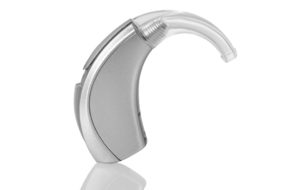
The Livio AI Hearing Aid; Photo Credit: Livio
The Thrive Voice Assistant will locally field troubleshooting and hearing aid related questions (what setting am I on? How much power is left on my batteries?), while more general questions will be sent to the cloud and be fielded by Google Assistant or Alexa. This feature can be activated with a double tap on the device or through the app.
This now marks the third different hearing aid OEM to introduce some type of smart-assistant themed feature, as Oticon released its Kaizn assistant in November of 2018 and GN Resound announced a Siri integration at this year’s CES. According to Deloitte, older adults represent one of the fastest growing demographics of smart assistant adoption, so these types of integrations will allow for the broad swath of older adults to access their smart assistants through their hearing aids if they happen to have hearing loss as well.
4. Nuheara Introduces IQ Buds MAX
Australian-based hearable manufacturer, Nuheara, added to its device lineup this year with the addition of the IQ Buds MAX. NuHeara’s first product, IQ Buds, which are true-wireless earbuds with amplification capabilities (allowing for those with mild hearing loss to benefit), have since been iterated on twice; initially with the IQ Buds BOOST, and then now with the MAX.
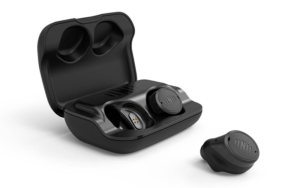
IQ Buds Max; Photo Credit: Nuheara
The IQ Buds BOOST’s key innovation was the “EarID” self-assessment hearing test that is designed to identify the user’s unique hearing profile and then calibrate the device’s audio output to match the user’s profile. It’s a clever piece of innovation that the company partnered with the National Acoustics Lab to create.
This year’s iteration, the IQ Buds Max, has five times the digital signal processing power than the BOOST. This increase in processing power will translate into a more natural sounding experience for the outside world sounds that are being processed and filtered through the device. As with the first two generations of IQ Buds, the MAX also allows for quick Siri and Google Assistant access through a tap on the device.
5. Widex Debuts Groundbreaking Battery Technology
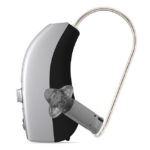
Evoke Hearing Aids; Photo Credit: Widex
Danish hearing aid manufacturer, Widex, introduced the world’s smallest commercially available fuel cell that will be used in its Evoke hearing aid. This is a fascinating power system, as it uses a methanol cartridge to power the battery and is capable of charging a battery that lasts 24 hours, in just 20 seconds. Considering that battery life presents one of the biggest challenges for miniature devices, this alternative method of powering hearables (and maybe one day, smartphones), could wind up being one of the most significant innovations to come out of this year’s show.
Hearables CES Presence Grows
There were certainly other interesting developments beyond these five. In a Voicebot interview from the floor of CES, Michael Yu of iFlyTek showed off the company’s live-language translator which is capable of translating 50 languages into Chinese. It’s also the most popular translator in China. Sony used AMAK to integrate Alexa into its WH-1000XM3 wireless headphones. Jabra unveiled its Elite 85-H over-the-ear wireless headphones which have some pretty interesting features such as Smart Sound Active Noise Cancellation, as well as built-in Alexa and Google Assistant access. As hearables continue to grow in maturity, so too does their presence grow at CES each year.
Competing For Ear Share – Apple AirPods, Google Pixel Buds, and Amazon Alexa
Qualcomm Announces Smart Headset Development Kit to Promote Alexa Use in Hearables


